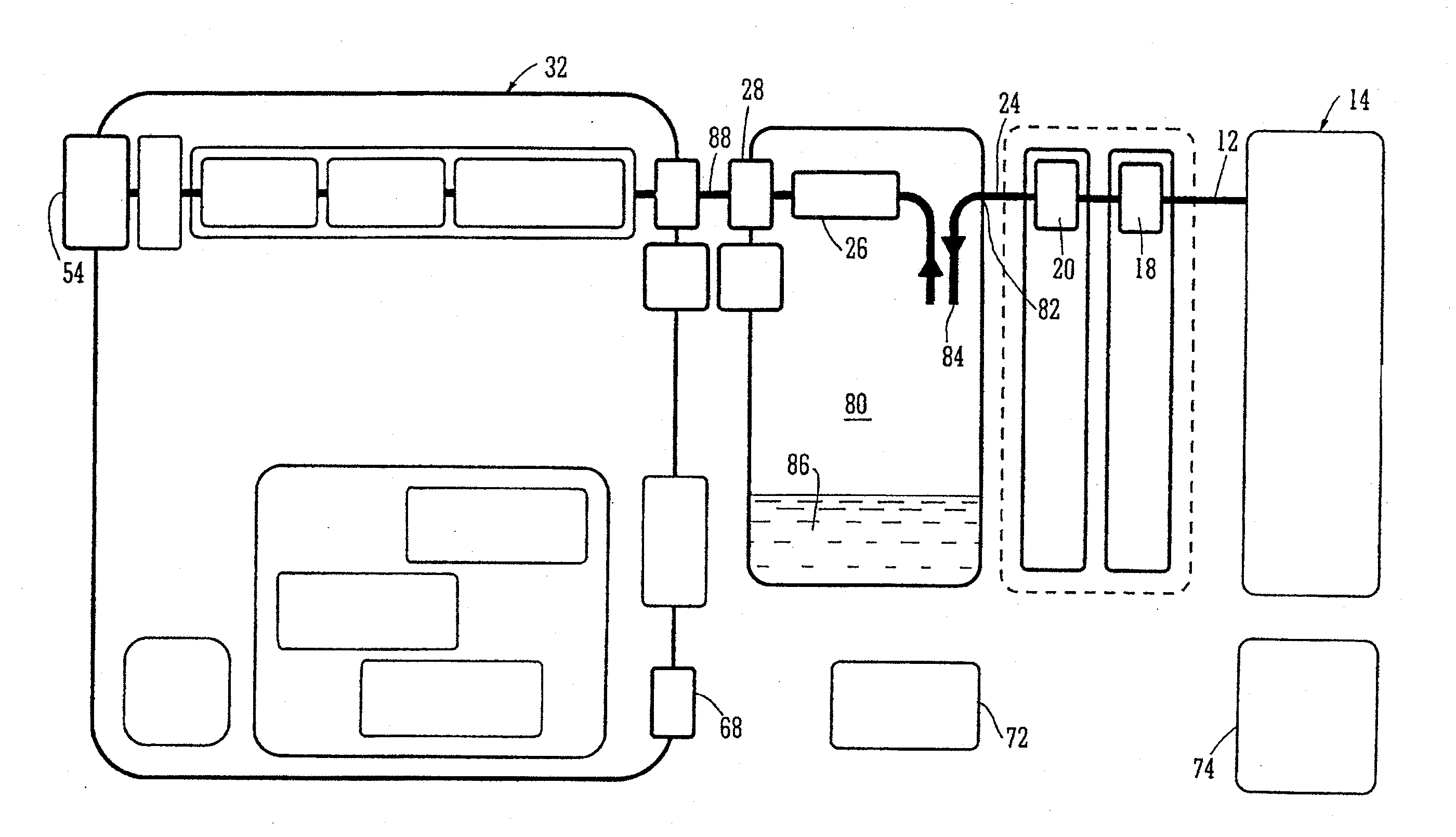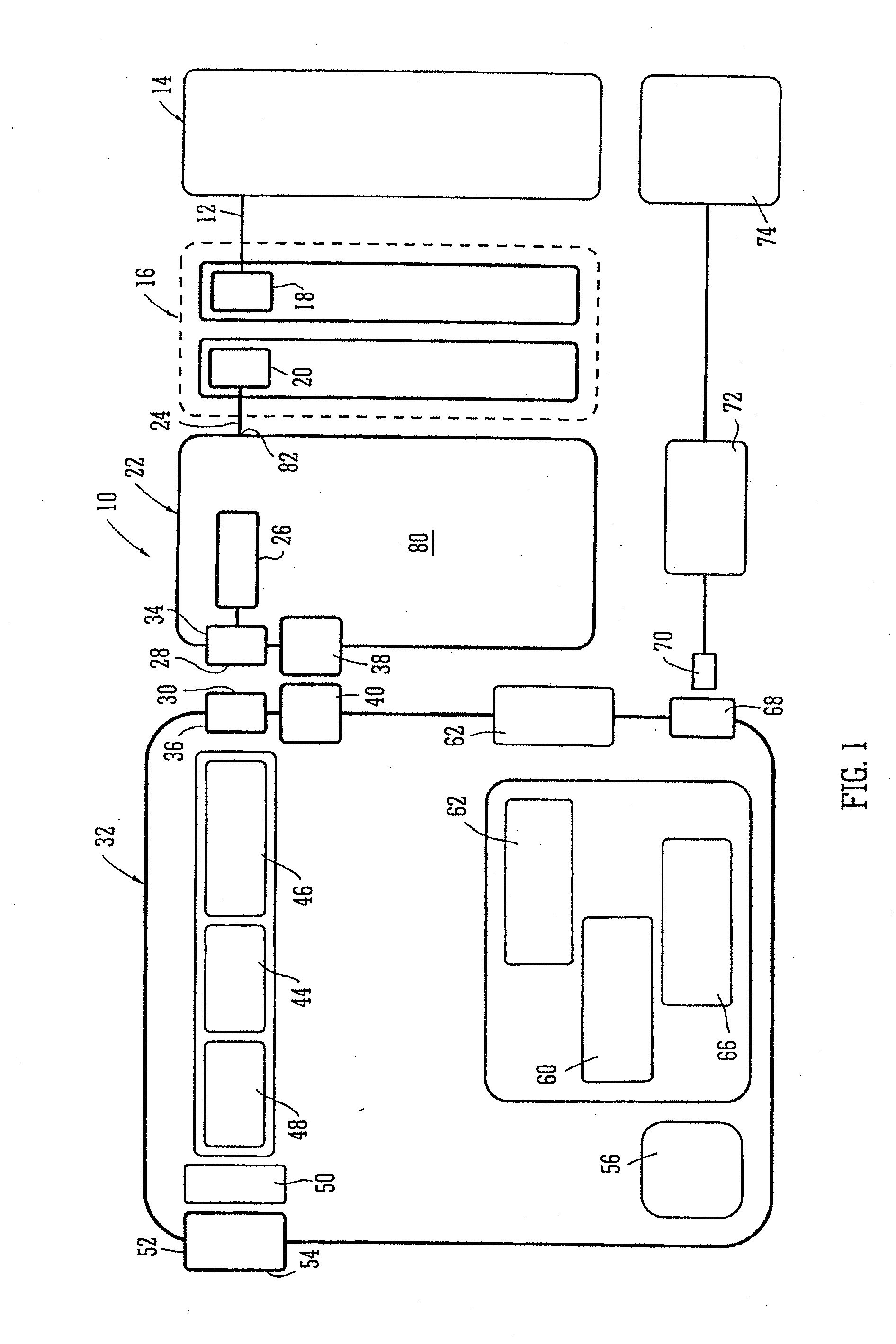Systems and methods for controlling operation of negative pressure wound therapy apparatus
a negative pressure wound and operation system technology, applied in the direction of intravenous devices, suction drainage containers, other medical devices, etc., can solve the problems of unsatisfactory results, unsatisfactory effects, and need for costly replacemen
- Summary
- Abstract
- Description
- Claims
- Application Information
AI Technical Summary
Benefits of technology
Problems solved by technology
Method used
Image
Examples
third embodiment
[0214]FIG. 20C shows a third embodiment where two pressures sensors 2040, 2042 are placed upstream of the pump 44 and between the pump 44 and flow restriction 2002. When the canister becomes full or the aspiration conduit blocked, pressure in the tubing 2000 will still be a negative pressure (below ambient atmospheric) and the pressure sensor 2040 will show a negative pressure. However, due to little or no flow of aspirant fluid through the pump 44, the pressure sensor 2042 will show effectively ambient atmospheric pressure which will pertain through the exhaust system to the exhaust aperture 54. Thus, if the pressure differential between sensors 2040 and 2042 signaled to the control system 60 is a negative differential the control system 60 will still activate the alarm. In reality the pressure differential is always likely to be negative since the pressure read by sensor 2040 will be in the region of −50 to −200 mm Hg, i.e. the negative pressure being applied at the wound site / dre...
fourth embodiment
[0215]FIG. 20D shows a fourth embodiment where the flow restrictor 2002 is placed between the canister 22 and pump 44 with pressure sensors 2050, 2052 placed between the canister and flow restrictor and between the flow restrictor and pump, respectively. When aspirant fluid flow through the restrictor 2002 falls to zero due to a full canister or blocked conduit, the two pressure sensors 2050, 2052 will both have the same reading albeit both reading a negative pressure as the pump is still running. Thus, equal or pressure signals less than a stored difference to the control system 60 will result in the alarm being activated.
fifth embodiment
[0216]FIG. 20E shows a schematic diagram of a fifth embodiment where a flow restrictor 2002 is placed downstream of the pump 44 and which has pressure sensors 2060, 2062 placed either side as in FIG. 10, for example, however, in this embodiment, there is a bypass conduit 2064 placed across the flow restrictor, the by-pass conduit 2064 having an adjustable pressure sensitive valve 2066 therein. The valve 2066 may be a simple, spring loaded device able to be set to open at a desired specific pressure. Thus, when, for example, there is relatively unrestricted fluid flow through the flow system in the overall apparatus due to the canister being less than full and the aspiration conduits 12, 24 being free and unblocked, the pump will have an unnecessary burden placed upon it due to the flow restrictor 2002 impeding flow and consequently the pump 44 will be operating inefficiently. Under these conditions pressure in the portion of the by-pass conduit 2068 will exceed a pressure set in the...
PUM
 Login to View More
Login to View More Abstract
Description
Claims
Application Information
 Login to View More
Login to View More - R&D
- Intellectual Property
- Life Sciences
- Materials
- Tech Scout
- Unparalleled Data Quality
- Higher Quality Content
- 60% Fewer Hallucinations
Browse by: Latest US Patents, China's latest patents, Technical Efficacy Thesaurus, Application Domain, Technology Topic, Popular Technical Reports.
© 2025 PatSnap. All rights reserved.Legal|Privacy policy|Modern Slavery Act Transparency Statement|Sitemap|About US| Contact US: help@patsnap.com



